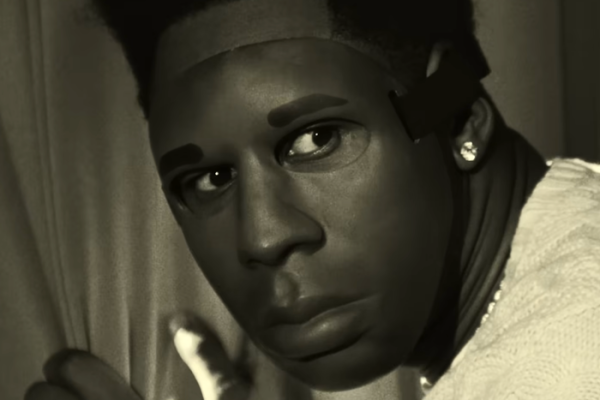Mask Mandate Lifting
Clarion photo Graphic By Sean Lee
On March 4, 2022, PPS Superintendent Guadalupe Guerrero released a statement announcing that the district will, in accordance with CDC and other relevant guidelines, lift the indoor mask mandate. The change will come on Monday, March 14, exactly two years and one day after PPS schools initially closed due to COVID in 2020. The landmark date is symbolic for many, encouraging a swift return to “normalcy.”
As has been the case with all developments over the course of the pandemic, this decision has been received with mixed opinions. Many are in full support of the decision, feeling excited to return to a semblance of normal life and not be burdened with the requirement of a mask. Others, however, still feel apprehensive about this change, whether due to emotional or health related concerns. Controversial as it may be, this change falls in line with Governor Kate Brown’s decision to lift mask mandates, making Oregon one of the last states to do so.
While COVID-19 guidelines have been consistently polarized over the course of the pandemic, some of this has fallen away as many Democratic officials–who have typically set more cautionary guidelines–lift restrictions. In tandem with California Governor Newsom and Washington Governor Inslee, Kate Brown announced the state-wide mask mandate would be revised on March 11, following a decrease in case rates and hospitalizations across the West Coast. In a letter to Oregon residents, Governor Brown stated, “Together, as we continue to recover from the Omicron surge, we will build resiliency and prepare for the next variant and the next pandemic. As we learn to live with this virus, we must remain vigilant to protect each other and prevent disruption to our schools, businesses, and communities––with a focus on protecting our most vulnerable and the people and communities that have been disproportionately impacted by COVID-19.”
In comparison to the consistency of their COVID policies over the past two years, these actions by governors Newsom, Inslee, and Brown reflect their hesitancy to maintain strict requirements due to fear of republican push back and re-election. The lifting of mask mandates signifies a political decision as much as a scientific one. In accordance with federal law, mask mandates will remain in place in many settings, such as public transportation and healthcare facilities–yet students are now given a choice. With the daunting possibility of a new variant, many argue lifting the mandate will delay the return to “normalcy.” Now that the CDC and bipartisan officials have lifted mask mandates, why are many individuals still hesitant to remove their masks?
As the U.S. has an upwards of one million COVID deaths, many individuals are still concerned about spreading the virus to vulnerable and immunocompromised populations. Additionally, reputable sources around mask safety get lost in a sea of misinformation, leading to uncertainty. After two years, it is unfathomable to many to imagine allowing ourselves a newfound sense of vulnerability by removing our masks. Regardless of how low the risk of contracting COVID may be, the possibility of what if strikes a deep sense of anxiety in many PPS community members.
As people begin to travel for spring break, the optional mask policy will likely increase the rate of transmission in schools upon return. During winter break of 2021, the U.S. experienced a similar surge in cases, due in part to the emergence of Omicron and increased national movement for the holidays. Although there is no notable variant emerging at the moment, we may still see a comparable scenario play out on a larger scale as people travel without the state mask requirements. However, as viruses tend not to thrive in warmer climates, the warmer temperature may provide some protection against the risk of transmission. Regardless, everyone must decide for themselves how to move forward with this sudden change in societal expectations.
People on both sides of the spectrum–those who do support the mandate ending and those who do not–face the fear of judgment based on their mask decision. Polarization and the moral assignments to COVID safety decisions have been prominent throughout the pandemic, and this phenomenon shows no sign of ending soon. Families of younger students worry that their children will be bullied or pressured about their decision–and this pressure may not be absent from upper grades, either. Whether someone is or is not wearing a mask, they are susceptible to judgment and pressure from others. We have seen this on a larger scale throughout our country over the past couple of years through partisan political nature, but the strict mandates in schools have spared students from taking the burden of decision into their own hands. With the impending change, PPS has been adamant that everyone in the community respects one another’s choices.
Some individuals just feel more comfortable wearing masks, whether for health, moral, or social reasons. For some, it’s freeing to move through the world with less social judgment, as masks can provide a sense of security and anonymity. During such an uncertain time, with no precedent as to how the pandemic will progress, a future without masks could seem too jarring. A more gradual easing of restrictions might ease people’s fears.
The effects of the pandemic have outlasted what many of us predicted, and two years after school shut down, the prospect of taking off masks evokes many emotions–excitement, fear, and more. We urge everyone to make their COVID-safety decisions based on science and consideration for everyone in our PPS community.






